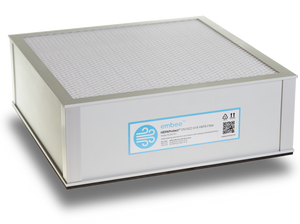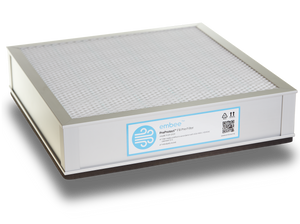香港差劣的空气质素所带来的致命影响
香港的空气污染是一种被人忽视的健康和环境危机,为居民的健康带来了沉重负担。世卫估计,在全球室外空气污染每年导致420万人过早死亡,其中东南亚和西太平洋地区的负担最大。
该死亡率是由于接触直径为2.5微米或更小的微细悬浮粒子(PM2.5)而引起的,这些物质会导致心血管和呼吸系统疾病以及癌症。据估计,大约3%的心肺疾病和5%的肺癌死亡可归因于全球的悬浮粒子污染。
香港PM2.5水平长期高于世卫指标
世卫的PM2.5微细悬浮粒子污染的年度平均限值为15μg/m³ :
- 在2019年,在香港追踪该数据的16个污染监测站中,每一个都超标。
世卫对PM2.5微细悬浮粒子污染的每日平均限值为25μg/m³。每年最多可以超标3天:
- 在2019年,中西区监测站有110天超过此水平。
没有安全水平
值得留意的是,这些限值并不代表安全水平,现时尚未确定任何不会对健康造成负面影响的安全水平
例如,一项日本研究表明,在平均PM2.5水平仅为12μg/m³的2年期间,每增加10μg/m³的水平会使心脏骤停(心脏病发作)的风险增加3-4 %。
Embee建议您监控身处位置的污染水平并安排户外活动的时间,以便在污染水平过高时减少接触。您可以在此处监视香港地区和中小学的当前水平和建议:
对香港居民的健康有什么影响?
香港空气质素欠佳,为居民带来沉重的健康负担:
据估计,香港每年有6300人死于室外空气污染,即平均每天有17人死亡。 香港中文大学公共卫生及基层医疗学院
死因主要是心脏病、中风、其他心血管和呼吸系统疾病以及癌症。
「因呼吸系统及心血管疾病入院及过早死亡的人数与严重空气污染之间有着重要的关连」香港卫生防护中心
怀孕期间的空气污染与早产、死胎、胎儿生长受损和出生畸形包括心脏瓣膜异常和颚裂有关。
香港的空气污染来自哪里?
- 与普遍的看法相反,香港大部分空气污染是在本地产生的。
- 航运是最大的源头,发电站、柴油车辆和建筑工程机械也是主要来源。
- 香港容许货柜船在香港水域和停泊时燃烧廉价和肮脏的硫含量0.5%的燃料。
- 这是欧洲、北美、韩国和中国的长江/西江地区以及海南沿海排放控制区的0.1%限制的5倍。
- 在路边,柴油车辆和建筑工程机械是主要来源。
在Embee的空气监测网站可以清楚看到,当地的污染源导致附近的空气质素变差:

以下是指向香港空气污染倡仪/慈善组织、相关政府网站、投诉污染表格以及有关个别污染物的更详细资讯的其他连结。
香港空气污染相关的倡议或慈善团体
-
Clean Air Network
CAN's vision is to build a Hong Kong with clean air through policy change , knowledge building, and collaboration. -
Clear The Air
Clear the Air (CTA) is committed to the introduction and implementation of measures to significantly reduce air pollution in Hong Kong, through advocacy and education.
相关香港政府网站
- Environmental Protection Department
https://www.epd.gov.hk - Government air quality information for residents
https://www.gov.hk/en/ residents/environment/air/ - Centre for Health Protection - the Health Effects of Air Pollution
https: //www.chp.gov.hk/en/healthtopics/content/460/3557.html
投诉污染
- Smokey vehicle complain form
https://cd.epic.epd. gov.hk/EPICCOM/smoky/ - General pollution complaints
https://www.gov.hk/en /residents/environment/public/?subcat=enquiries
Particulate Matter (PM) affects more peoples' health than any other pollutant.
It consists of billions of tiny particles (PM2.5 is about 1/30 the width of a human hair) made of everything from nitrates and ammonia to black carbon and mineral dust.
Primary sources in Hong Kong are ships, trucks, coal power stations in Lamma and Castle peak, and construction activities
PM2.5 particles are so small that when inhaled, they can pass directly into your bloodstream, and then around your body to organs including the brain.
There is strong evidence linking PM2.5 pollution levels to heart disease, cancer, strokes, and COPD.
PM2.5 has health impacts even at very low concentrations – no threshold has been identified below which no damage to health is observed.
(O3)
A highly reactive gas formed by other pollutants from ships, vehicles and power stations reacting with sunlight.
Ozone is the primary contributor to the "smog" most people associate with air pollution.
Short-term effects:
- Shortness of breath, wheezing, coughing, and inflammation of the airways.
- Asthma attacks and increased risk of respiratory infections.
- Increased hospital admissions for those with COPD, asthma, and other lung diseases.
Longer-term effects:
- Development of asthma in adolescents and reduced lung function.
- Higher risk of death from respiratory diseases.
- Low birth weight and decreased lung function in newborns.
An acidic gas generated during combustion in ships, vehicles, and power stations.
NO2 along with other NOx also reacts with other chemicals in the air to form both particulate matter and ozone
NO2 is toxic at levels >200 μg/m³, causing significant inflammation of the airways.
Typical immediate effects include:
- Shortness of breath, wheezing, coughing, and inflammation of the airways.
- Increased risk of respiratory infections.
- Asthma attacks.
- Increased hospital admissions for those with COPD, asthma, and other lung diseases.
Reduced lung function and development of asthma is linked to NO2 levels that are commonly experienced in Hong Kong.
SO2 irritates the eyes and respiratory system, aggravates asthma and chronic bronchitis, and makes people more prone to infections of the respiratory tract.
When SO2 levels are high, hospital admissions and deaths from cardiac disease increase.
- Ambient (outdoor) air pollution WHO
- Health Effects of Particulate Matter. WHO
- Developing an Instrument for Assessing the Health and Economic Impacts of Air Pollution in Hong Kong - Final Report. School of Public Health and Primary Care The Chinese University of Hong Kong
- The Health Effects of Air Pollution. Centre for Health protection, Department of Health, The Government of the HKSAR.
- Short-term exposure to ambient fine particulate matter and out-of-hospital cardiac arrest: a nationwide case-crossover study in Japan
https://www.thelancet.com/journals/lanplh/article/PIIS2542-5196(19)30262-1/fulltext




